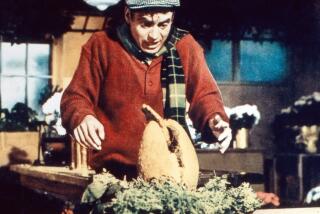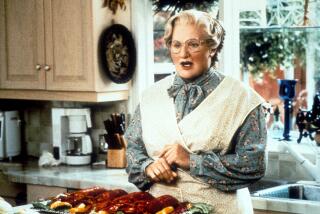Ronald Haver; Restored Classic ‘Star Is Born’
- Share via
Ronald Haver, dubbed “the Indiana Jones of film history” for his relentless detective-like reconstruction of George Cukor’s classic film “A Star Is Born” and his work on other Hollywood treasures, has died. He was 54.
Haver, pioneering director of the film department of the Los Angeles County Museum of Art for the past 20 years, died Tuesday in a Culver City nursing home of complications of AIDS.
An inveterate film buff since his childhood in the Oakland area, Haver earned international acclaim in 1983 when he meticulously traced 20 of the 27 minutes of film that had been cut--and then lost--from Cukor’s musical version of “A Star Is Born” shortly after it opened in 1954.
Convinced that the lost footage still existed in Warner Bros. film vaults, Haver persuaded the head of the Academy of Motion Picture Arts and Sciences to seek the studio’s assistance in restoring the film. Although an earlier studio administration had ordered the footage cut and presumably destroyed, Warner readily agreed to help and kicked in $30,000 for the hunt.
“It was like being given the key to the candy shop,” said Haver, who regularly wore a fedora with the same ease as the fictional archeologist to whom he was compared.
Finding nothing in the underground caverns at the old Vitagraph Studios in Brooklyn, Haver finally unearthed a seven-minute musical number from the missing film segments in Warner’s massive concrete storage bunkers in Burbank. He eventually pieced together his 20 minutes from unused takes of the missing segments he found in 200 cans of film.
“It was like putting a jigsaw puzzle together with a blindfold on,” Haver said later in describing the reassembly job to The Times.
The restored classic film starring Judy Garland and James Mason was introduced to turn-away crowds at New York’s Radio City Music Hall on June 30, 1983, and played to sold-out houses in Los Angeles and Washington. Haver also took it triumphantly to the Venice, Deauville, San Sebastian and London film festivals.
In 1988, he detailed his treasure hunt in the book “A Star Is Born: The Making of the 1954 Movie and Its Restoration.”
Los Angeles Times film critic Kevin Thomas called it “quite simply one of the best books ever written about Hollywood.”
But it was another classic picture that had led Haver to decide on a career in film. He cut high school classes in 1954 to see a revival of “Gone With the Wind” in San Francisco. Later he said of the experience: “To a movie-struck kid it was like dying and going to a Technicolor heaven.”
He saw the film another 118 times during his first job--as a doorman at the Grand Lake Theater in Oakland.
After working as an usher in a Los Angeles theater, Haver joined the Army, which took him to New York City. He stayed on during the 1960s, working as a publicist and actor and taking film classes at the New School and Columbia University.
In 1970, he returned to Los Angeles as projectionist for the American Film Institute in Beverly Hills.
Two years later, Haver helped film historian David Shepard create a permanent film program for the Los Angeles County Museum of Art. He was soon named director, and pioneered money-making museum showings of classic films punctuated by talks by the films’ stars, producers and directors. He also developed symposiums on the art of filmmaking and mounted exhibitions of historic film posters and other memorabilia.
He did not neglect the film that projected him toward his career. In addition to staging a lavish anniversary showing of “GWTW,” Haver published an exhaustive compilation, “David O. Selznick’s Hollywood,” about its producer.
Times entertainment writer Charles Champlin called the widely acclaimed 100,000-word, 1,500-illustration book published in 1980 “quite extraordinary.”
Haver also wrote for American Film and Film Comment, did reviews for video magazines and helped produce Criterion laser discs.
He is survived by his mother, Ann Calistro; his sister, Paddy Calistro McAuley, and a nephew and niece, all of Santa Monica.
The family has requested that any memorial donations be made to the film department of the Los Angeles County Museum of Art.
More to Read
Only good movies
Get the Indie Focus newsletter, Mark Olsen's weekly guide to the world of cinema.
You may occasionally receive promotional content from the Los Angeles Times.










